Soccer drills for technique attack / offense
- Pass kick with variations in finishing and build-up.
- Goalkeeper throws out.
- Forward passes and closes in.
- Handball.
- Goalkeeper shoots out,
- forward with his back to the goal.
- He turns away.
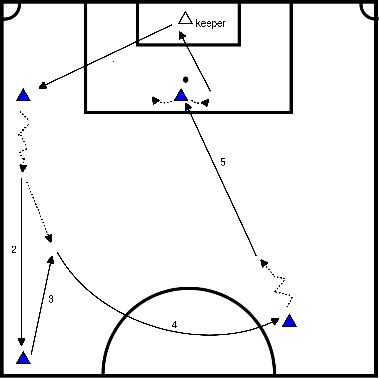
- Short pass man on the right, getting inside the ball.
- Short handball, moving around the declarer.
- Tight short pass to striker.
- Handball to right player.
- Tight ball between the lines in the deep to the outfield player.
- Run on time!
- Do not be offside.
- Tight pass to the centre.
- Finish!
- No touch is an extra point.
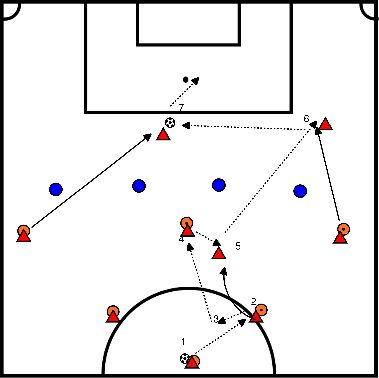
- Exercise double lining up.
- O1 plays in to O2.
- O2 plays long ball to K. K controls/catch ball and plays out the 3 on 2.
- When O1/O2 take ball they score at big goal with K .
- K + A1 and A2 score at small goal which O1/O2 defend.
- Duration:
- 15 min.
- Passing on :
- O1/O2 become A1/A2 and vice versa.
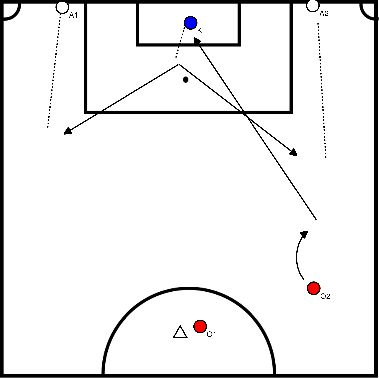
- Trainer kicks depth ball.
- K decides whether to come out or defend goal.
- Attacker tries to take ball away and score on goal.
- If goalkeeper has ball, 2 on off via O.
- Attacker takes ball with him and may not finish in 1 time.
- Line up twice (2 trainers).
- Duration 15 minutes.
- Upgrade 1 :
- Trainer chooses high ball.
- Upgrade 2 :
- 2 attackers instead of 1 (2 VS 2), attacker 2 may only join when goalkeeper can play.
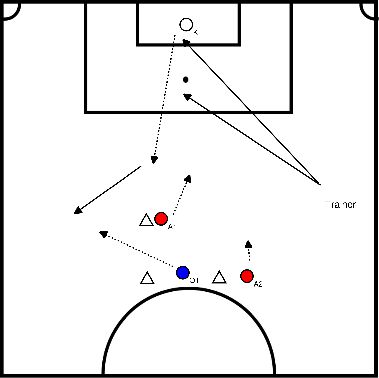
- Possibly double line up.
- 2 trainers.
- Duration 10 min.
- Goalkeeper 1 kicks out to goalkeeper 2 (long ball).
- Goalkeeper 2 controls and builds up attack via A1.
- A1 plays on opposite flank A2 .
- A1/A2 and goalkeeper 2 build on goal K1.
- Defenders join in.
- Passing attackers become defenders.
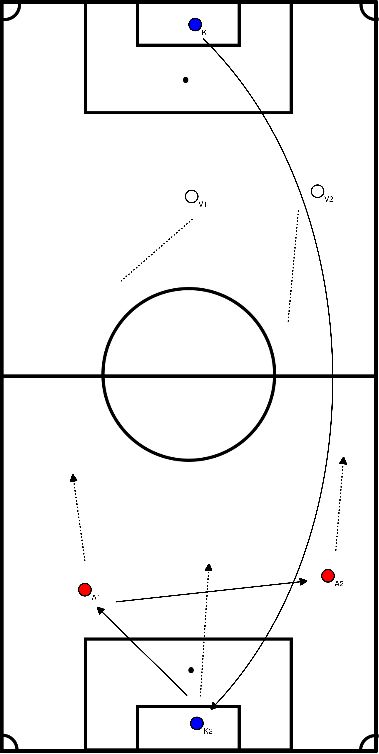
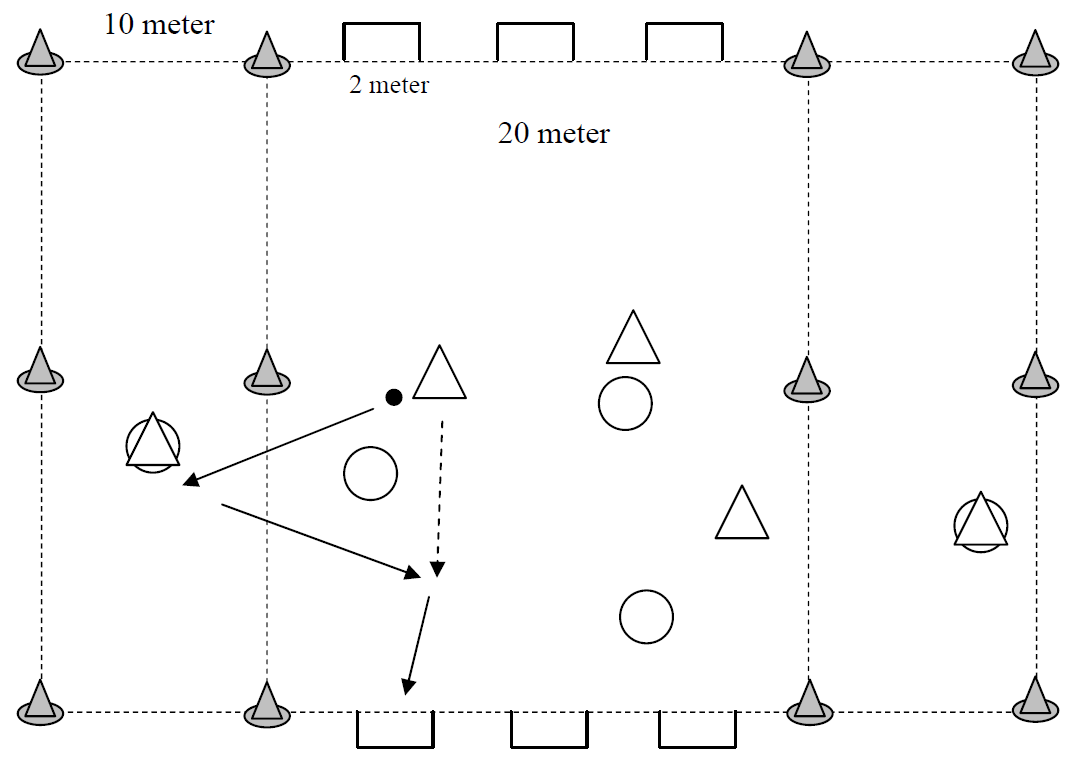
Organisation:
The game is played 3:3 with extra players on the sides, the outfield players. These 2 players are with the ball-carrying team.
Encourage the offside players to play quickly.
The offside players can also dribble with the ball first
After a few minutes, they must either play directly or pass and play
If this is going well, you can also let the two offside players play directly.
The players on the outside are not allowed to score
After 10 minutes or a little less, change the outfielders.
Remarks:
After the offside players have to accept and play, the game runs better. There is
more football in the gamenow
, while in the beginning the outfielders were running a lot with the ball
.
Points of attention:
Try to play directly.
Make sure they use the sides and do not always go for their own success.
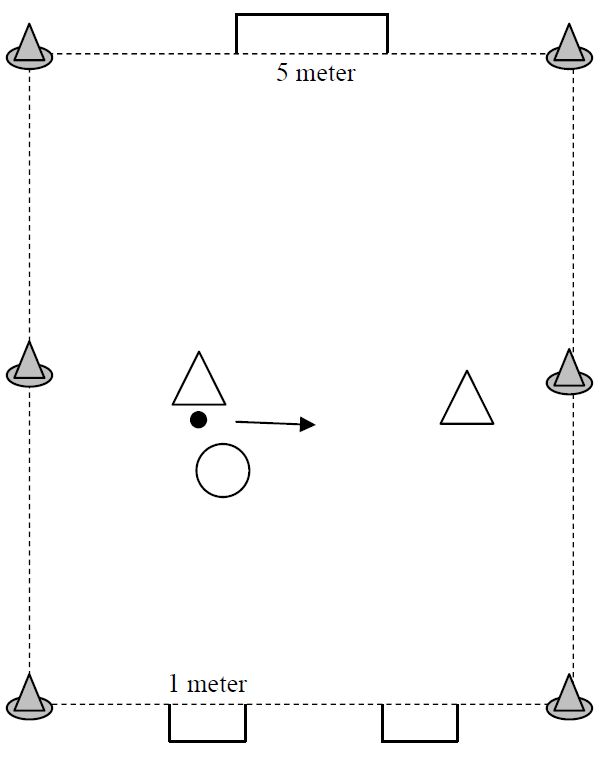
Organization:
The game is played 2 against 1. If there are 2 players left they play 1:1 on a smaller field.
The pair tries to score on the 2 little goals.
After about 8 minutes the players are changed.
If the 2 team has it too easy, you can move the 2 goals closer together.
Remarks:
Because of the many 1:1 duels you can soon see if they are doing well or not so well. Don't
give them instructionsin the first
game. Give them the chance to improve themselves.
Points of attention:
Prevent the opponent from shooting at goal.
Position yourself in such a way that it is difficult for your opponent to pass to his/her team-mate
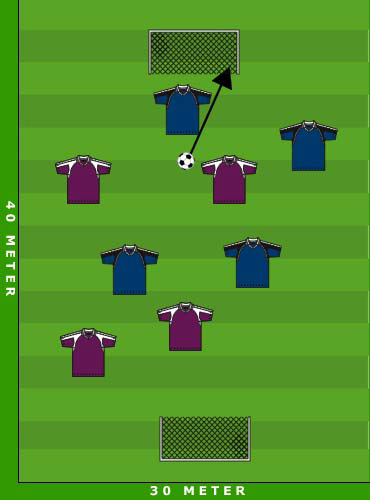
Field setup:
2 large goals
How the game progresses:
This can be done in 4 v 4 or 3 v 3 or even 2 v 2 formation. Players must always pass 1 player before the ball is passed to the teammate.
Rules/tips:
- If there is scored or shot over the line the ball must be given to the other team.
- A goal may not be scored from the team's own half.
- One player must always be passed before a pass can be made. If this is not done, it is a free ball for the other team.
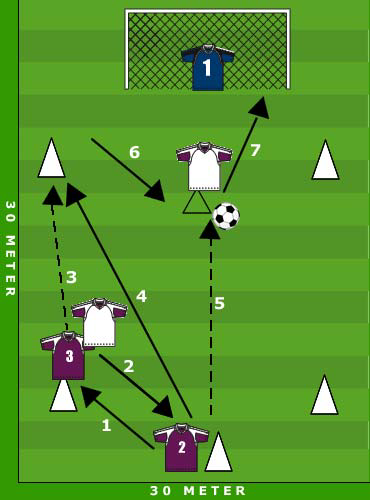
Field position:
1 starting pawn at 30 meters from the goal. A defender at 10 meters from the goal. A goalkeeper on the goal. A second defender with the rising attacker.
Sequence of play:
According to the numbering in the diagram, the pass from the attacker through the midfielder is played deep. The defender runs with the attacker while the midfielder runs towards the goalkeeper to get the ball there and tries to score.
Rules/tips:
- Defenders start at 50% effort and increase it later.
- Make sure the ball is played deep.
- The cross can be hit from the left or from the right.
- A variation on this is to play with 2 midfielders and have 1 run towards the far post.
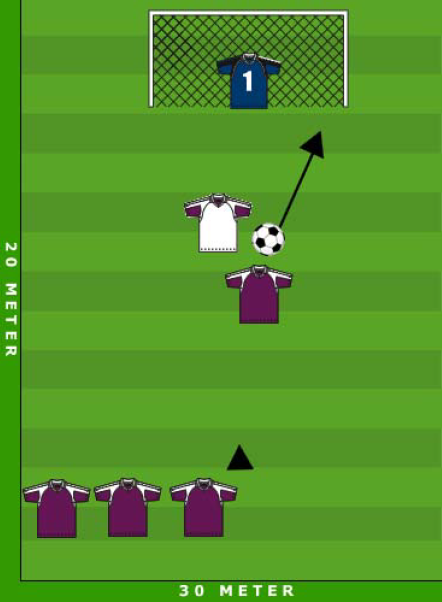
Field position:
1 starting pawn at 30 meters from the goal. A defender at 20 meters from the goal. One goalkeeper on the goal.
How to play:
Player dribbles towards the goal and tries to pass the defender and then score a goal at the goalie.
Rules/tips:
- Only when the first player is finished can the second one, etc.
- Start with 50% defence and increase it later on.
- Try different passing moves.
- Always try to get the ball in front of your shooting foot after the pass.
- For the goalkeeper: only when the attacker has passed the defender should he run out
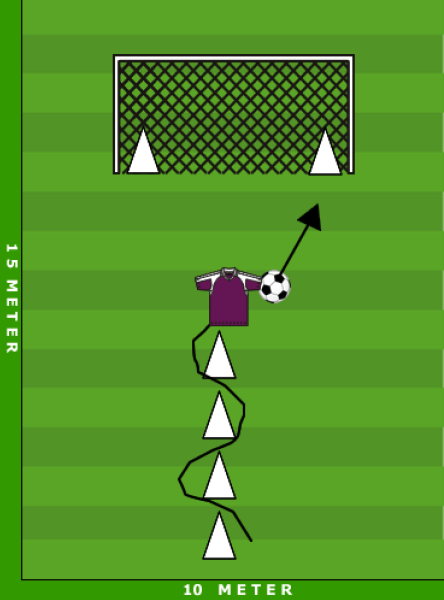
Field position:
4 to 6 pawns along which to dribble. 2 x a pawn in the goal.
How to play:
Player dribbles along/through the cones and tries to knock over one of the cones in one move with a hard shot (so top foot).
Rules/tips:
- The player must retrieve his ball from the net himself.
- The player must retrieve his ball from the net.
- The player must retrieve the ball himself.
- Another player can only start when the first player has taken his ball away.
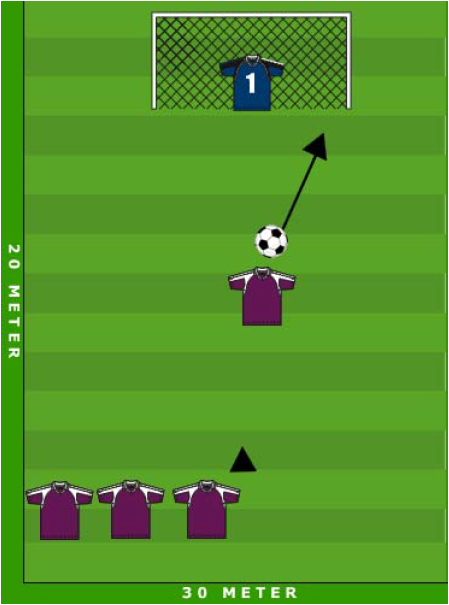
Field position:
1 pawn to be started from.
How the game progresses:
Player sprints with the ball towards the goalkeeper and tries to score.
Rules/tips:
- The player must retrieve his ball from the net himself.
- The player must retrieve the ball he missed by himself.
- Another player can only start when the first player has taken his ball away.







